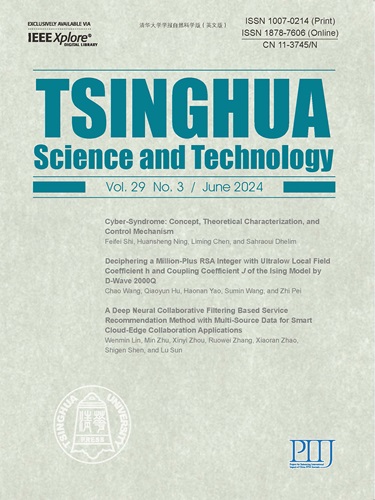线性噪声下时变矩阵伪反演的归零神经网络
IF 3.5
1区 计算机科学
Q1 Multidisciplinary
引用次数: 0
摘要
矩阵伪逆的计算是各种科学计算和工程领域中反复出现的需求。主流的矩阵伪逆模型通常在无噪声求解过程的假设下运行,或者假设在计算之前已经有效地处理了存在的任何噪声。然而,时变矩阵伪逆的并发实时计算具有重要的实用价值,而用于消除或减少噪声的抢占式预处理可能会给实时实现带来额外的计算开销。与以往求解时变矩阵伪逆的模型不同,本文提出并研究了一种利用双积分结构求解时变矩阵伪逆的模型——双积分增强归零神经网络(DIEZNN)模型,该模型能够在求解时变矩阵伪逆的同时有效地消除线性噪声扰动的负面影响。实验结果表明,在线性噪声存在的情况下,DIEZNN模型比原始归零神经网络模型和li型激活函数增强的归零神经网络(ZNN)模型都具有更好的噪声抑制性能。并将该模型应用于可控永磁同步电机混沌系统的控制中,进一步验证了DIEZNN在工程应用中的优越性。本文章由计算机程序翻译,如有差异,请以英文原文为准。
A Novel Zeroing Neural Network for Time-Varying Matrix Pseudoinversion in the Presence of Linear Noises
The computation of matrix pseudoinverses is a recurrent requirement across various scientific computing and engineering domains. The prevailing models for matrix pseudoinverse typically operate under the assumption of a noise-free solution process or presume that any noise present has been effectively addressed prior to computation. However, the concurrent real-time computation of time-varying matrix pseudoinverses holds significant practical utility, while the preemptive preprocessing for noise elimination or reduction may impose supplementary computational overheads on real-time implementations. Different from previous models for solving the pseudoinverse of time-varying matrices, in this paper, a model for solving the pseudoinverse of time-varying matrices using a double-integral structure, called Double-Integral-Enhanced Zeroing Neural Network (DIEZNN) model, is proposed and investigated, which is capable of solving time-varying matrix pseudoinverse while efficiently eliminating the negative effects of linear noise perturbations. The experimental results show that in the presence of linear noise, the DIEZNN model demonstrates better noise suppression performance compared to both the original zeroing neural network model and the Zeroing Neural Network (ZNN) model enhanced with a Li-type activation function. In addition, these models are applied to the control of chaotic system of controllable permanent magnet synchronous motor, which further verifies the superiority of DIEZNN in engineering application.
求助全文
通过发布文献求助,成功后即可免费获取论文全文。
去求助
来源期刊

Tsinghua Science and Technology
COMPUTER SCIENCE, INFORMATION SYSTEMSCOMPU-COMPUTER SCIENCE, SOFTWARE ENGINEERING
CiteScore
10.20
自引率
10.60%
发文量
2340
期刊介绍:
Tsinghua Science and Technology (Tsinghua Sci Technol) started publication in 1996. It is an international academic journal sponsored by Tsinghua University and is published bimonthly. This journal aims at presenting the up-to-date scientific achievements in computer science, electronic engineering, and other IT fields. Contributions all over the world are welcome.
 求助内容:
求助内容: 应助结果提醒方式:
应助结果提醒方式:


